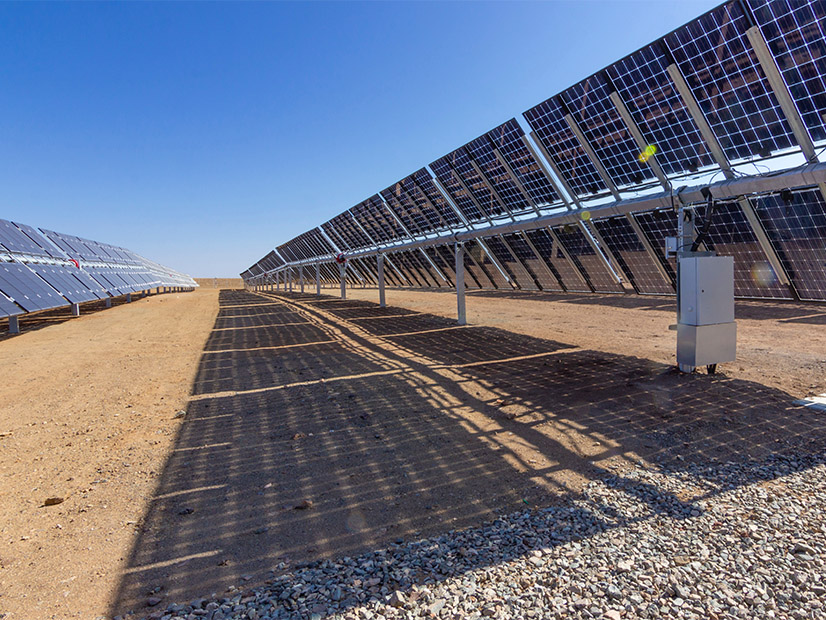President Biden on Friday extended Trump-era tariffs on imported solar cells and panels but softened the blow by continuing an exemption for bifacial panels and doubling the amount of imports that can enter the country duty free each year, from 2.5 GW to 5 GW.
In his proclamation on the tariffs, Biden said keeping the tariffs in place was “necessary to prevent or remedy serious injury to the domestic [solar] industry” from cheaper imports, mostly from China, while also noting that “the domestic industry is making a positive adjustment to import competition.”
The president also said the tariffs will step down each year, but according to an addendum to the proclamation, these reductions will be minor. When originally established by former President Donald Trump in 2018, the solar tariffs stood at 30%, with a 5% decrease every year to their current level of 15%. Biden’s extension shaves the tariff amount by 0.25% annually, beginning at 14.75% in 2022 and bottoming out at 14% in 2026.
The solar industry’s reaction was mixed. The Solar Energy Industries Association (SEIA) has long opposed the tariffs, arguing that they have cost the industry close to 62,000 jobs and have not produced a significant increase in domestic manufacturing. SEIA CEO Abigail Ross Hopper expressed disappointment with the extension but said that the administration had reached a “balanced solution” with the bifacial exemption and quota increase.
“Today’s decision recognizes the importance of [bifacial] technology in helping to improve power output and lower costs in the utility-scale segment,” Hopper said. “It is a massive step forward in producing clean energy in America and in tackling climate change.”
Gregory Wetstone, president and CEO of the American Council on Renewable Energy, called the bifacial exemption and doubling of the duty-free quota “reasonable steps that will help our clean energy sector to continue growing at the rate we need to reach our climate goals.”
But he also called for stronger federal action to build out a “robust domestic supply chain … including enactment of the clean energy manufacturing incentives found in the Build Back Better Act.”
Mark Widmar, CEO of Arizona-based First Solar, which manufactures thin-film solar panels, slammed the bifacial exemption for “[unleveling] the playing field. … With bifacial being the dominant Chinese solar product today, this decision effectively allows China to outflank American efforts to grow self-reliant solar supply chains.”
Bifacial technology allows panels to produce power on both sides versus the one-sided panels that have been the industry standard. They can therefore produce more power per panel and are increasingly being used in utility-scale projects across the country, but the U.S. has yet to develop a home-grown supply chain.
Sen. Rob Portman, a Republican from Ohio, where First Solar is building a 1.8 million-square-foot plant, also criticized the bifacial exemption. “It will do nothing to incentivize the investments necessary to expand domestic manufacturing of solar panels, and only continues our reliance on China and their forced labor practices for this technology,” he said.
Widely referred to as the Section 201 tariffs — for the provisions in the 1974 Trade Act which authorizes them — the tariffs were first put in place by Trump in 2018, following a complaint from two U.S. solar manufacturers, Suniva and SolarWorld, to the U.S. International Trade Commission. SolarWold was acquired by SunPower, a leading U.S. solar manufacturer.
The decision on whether to renew the tariffs has been a loaded one for Biden as he tries to stimulate domestic supply chains for renewable energy while accelerating the deployment of solar to meet his targets of a decarbonized grid by 2035 and a net-zero economy by 2050. The energy provisions of the stalled Build Back Better bill included production tax credits and other incentives to spur domestic supply chains.
The catch is that supply chain expansion generally follows demand. According to widely cited figures from the Chinese Photovoltaic Industry Association, China produces about 80% of solar panels used in the U.S. and worldwide. Dependence on Chinese imports has long been a sore point for the U.S. solar industry and a target for critics of Biden’s clean energy policies, who argue that accelerating decarbonization of the grid will only increase that dependence.
Reports of forced labor at some Chinese solar plants have also raised concerns on both sides of the aisle, and in June, Biden banned the import of silicon materials from a Chinese manufacturer found to be using forced labor.
As a result of the tariffs, both Chinese and Korean solar cell and panel producers have begun manufacturing in the U.S. JinkoSolar, a Chinese firm, has a factory in Jacksonville, Fla., while Korean firms LG Electronics and Hanwha Q Cells opened plants, respectively, in Huntsville, Ala., and Dalton, Ga.




